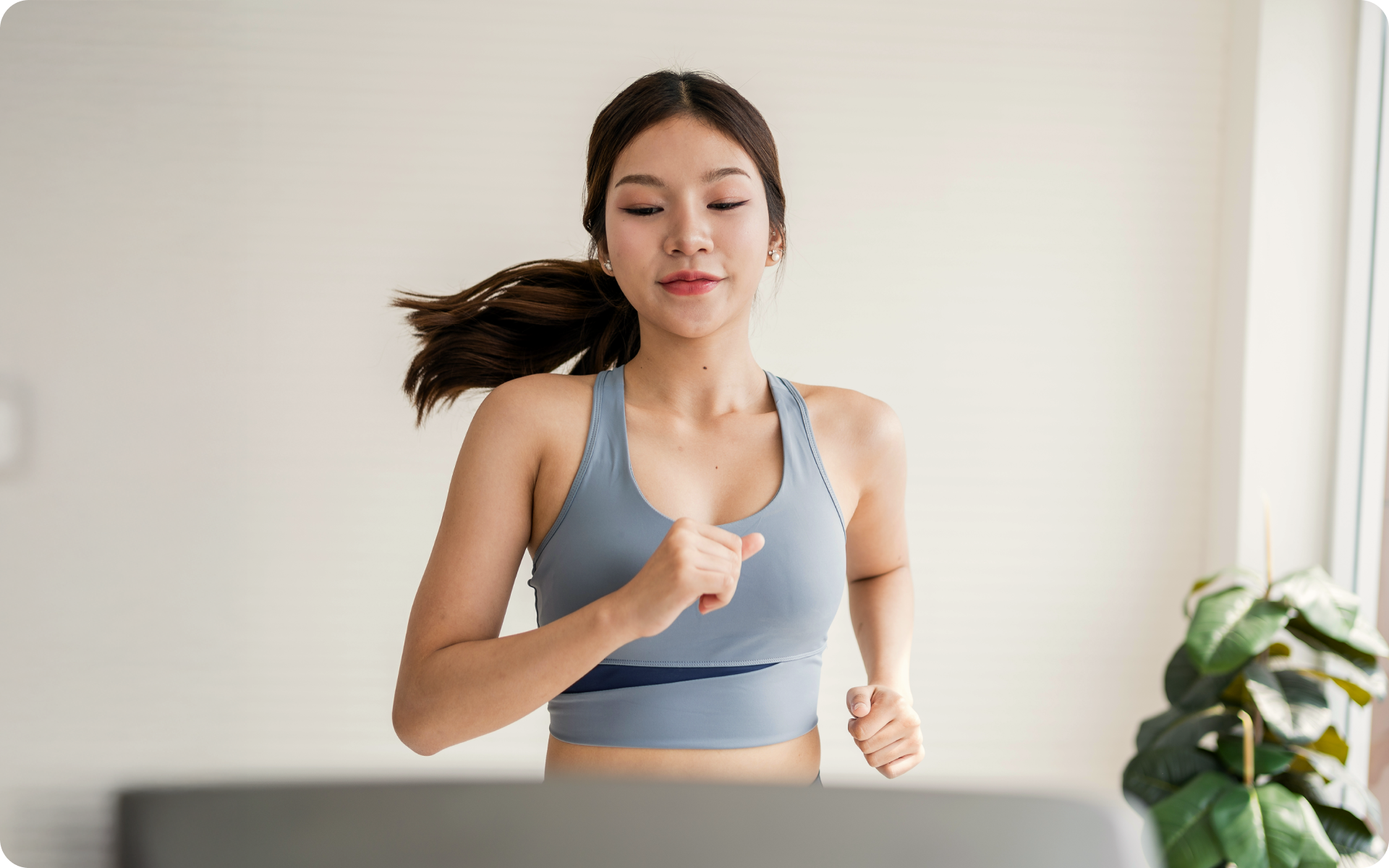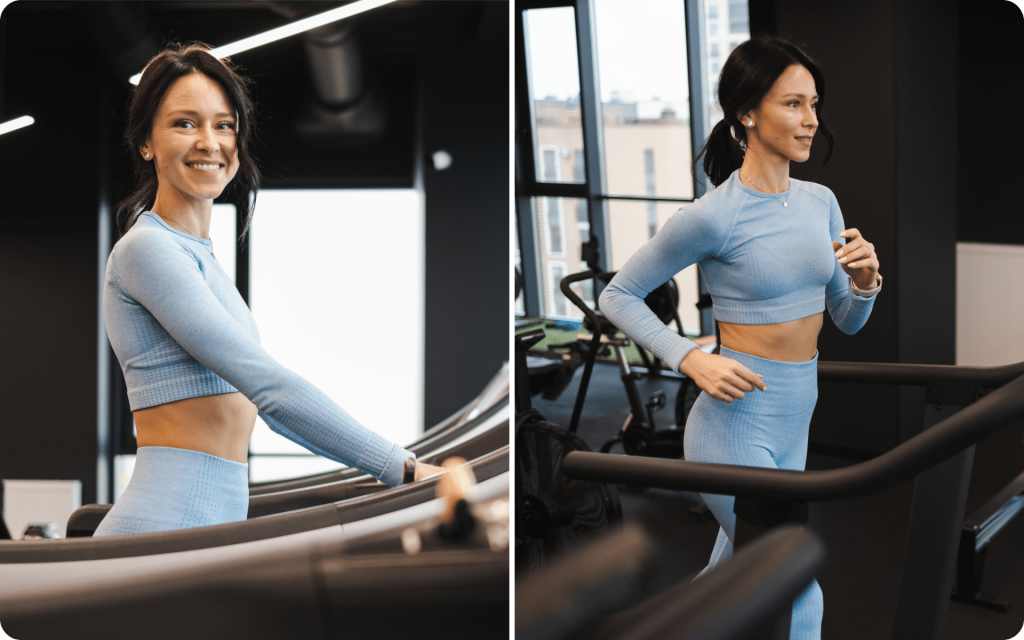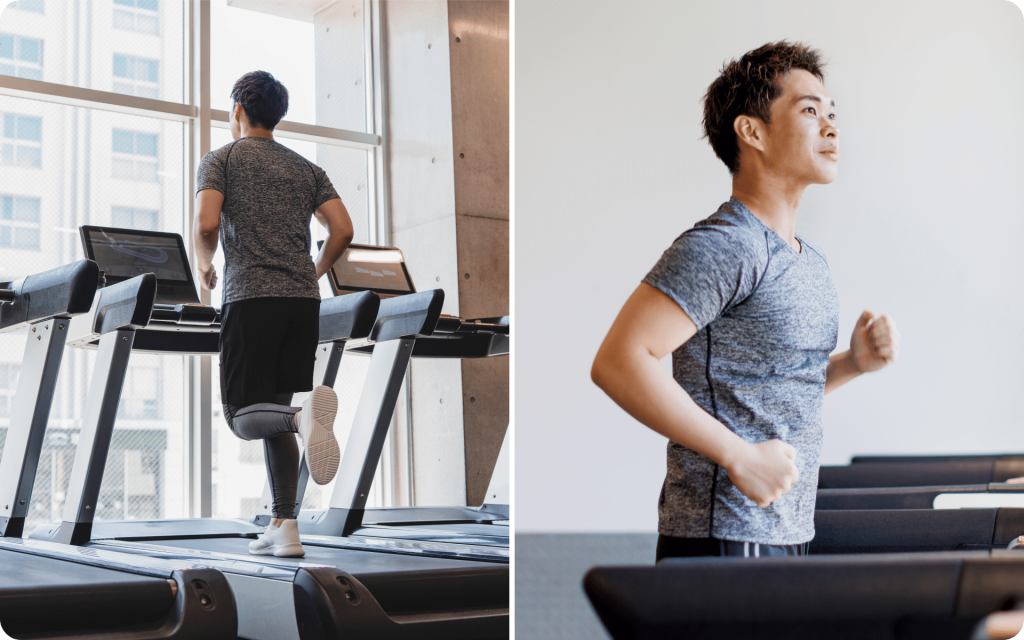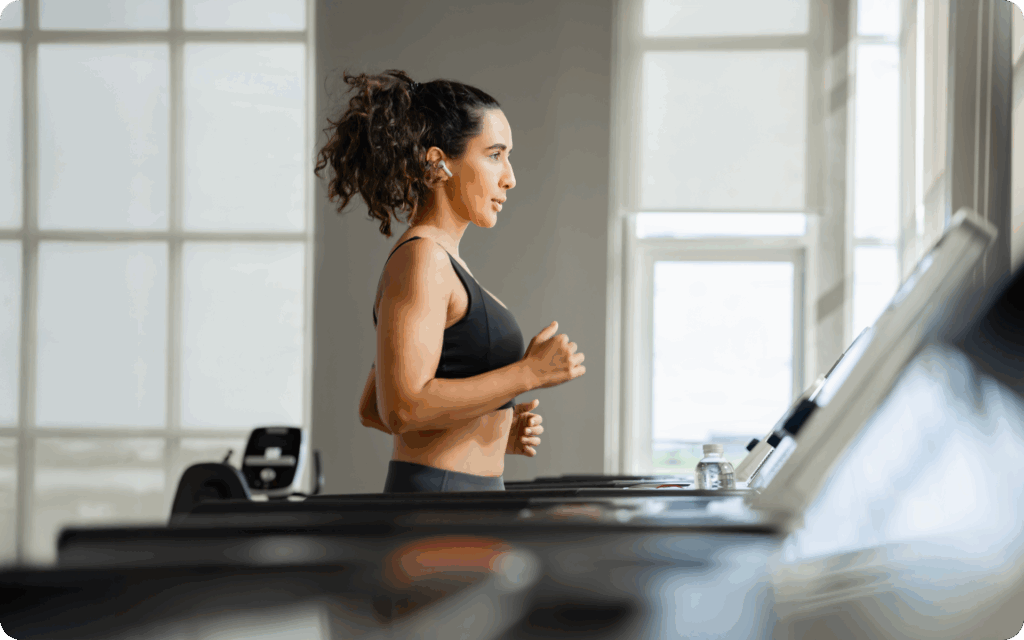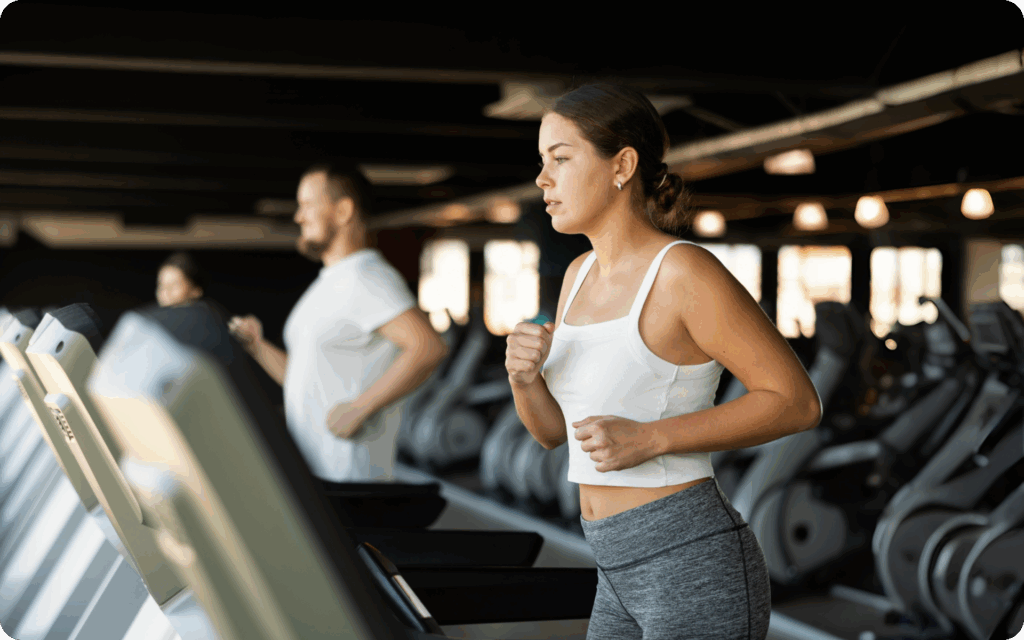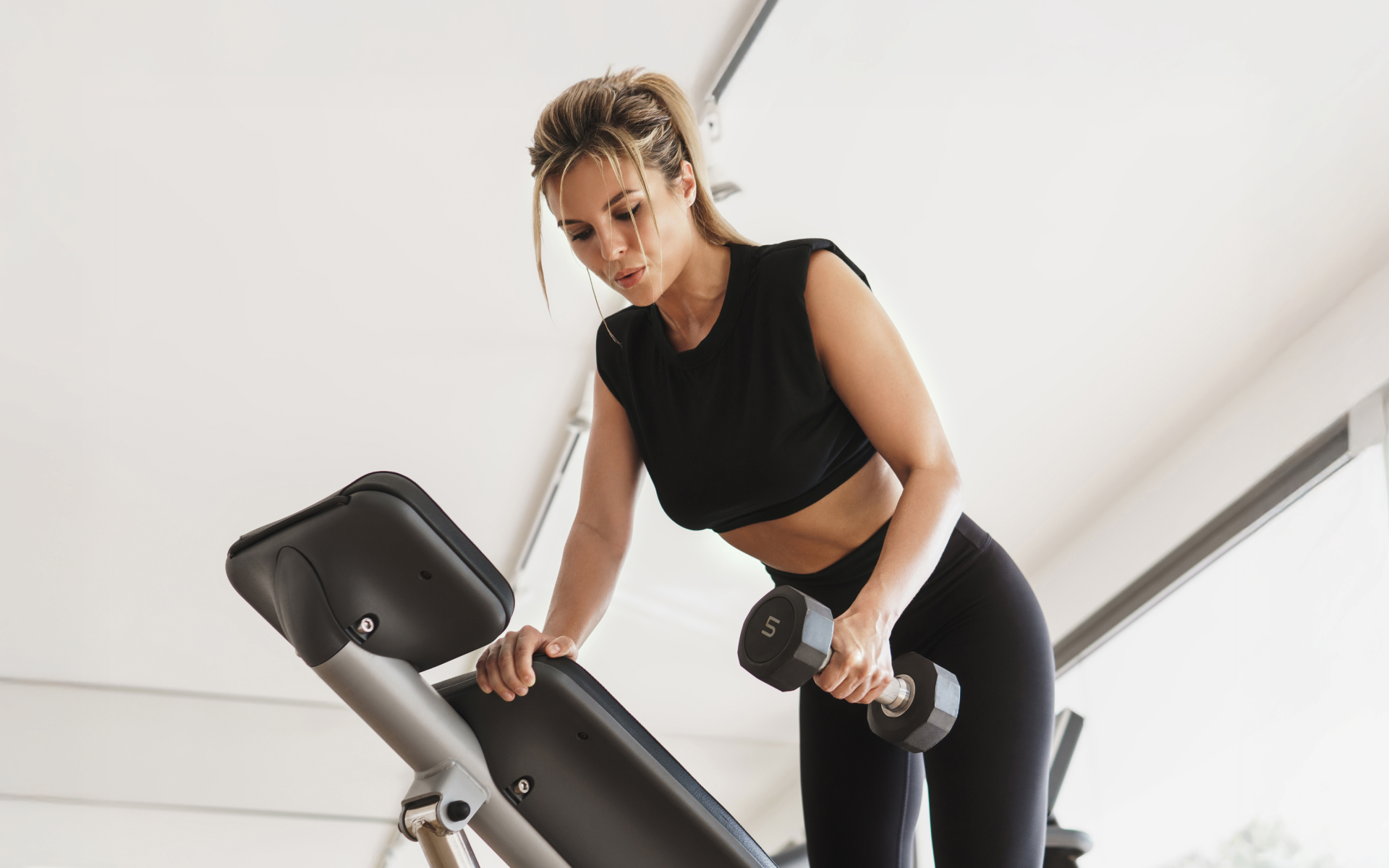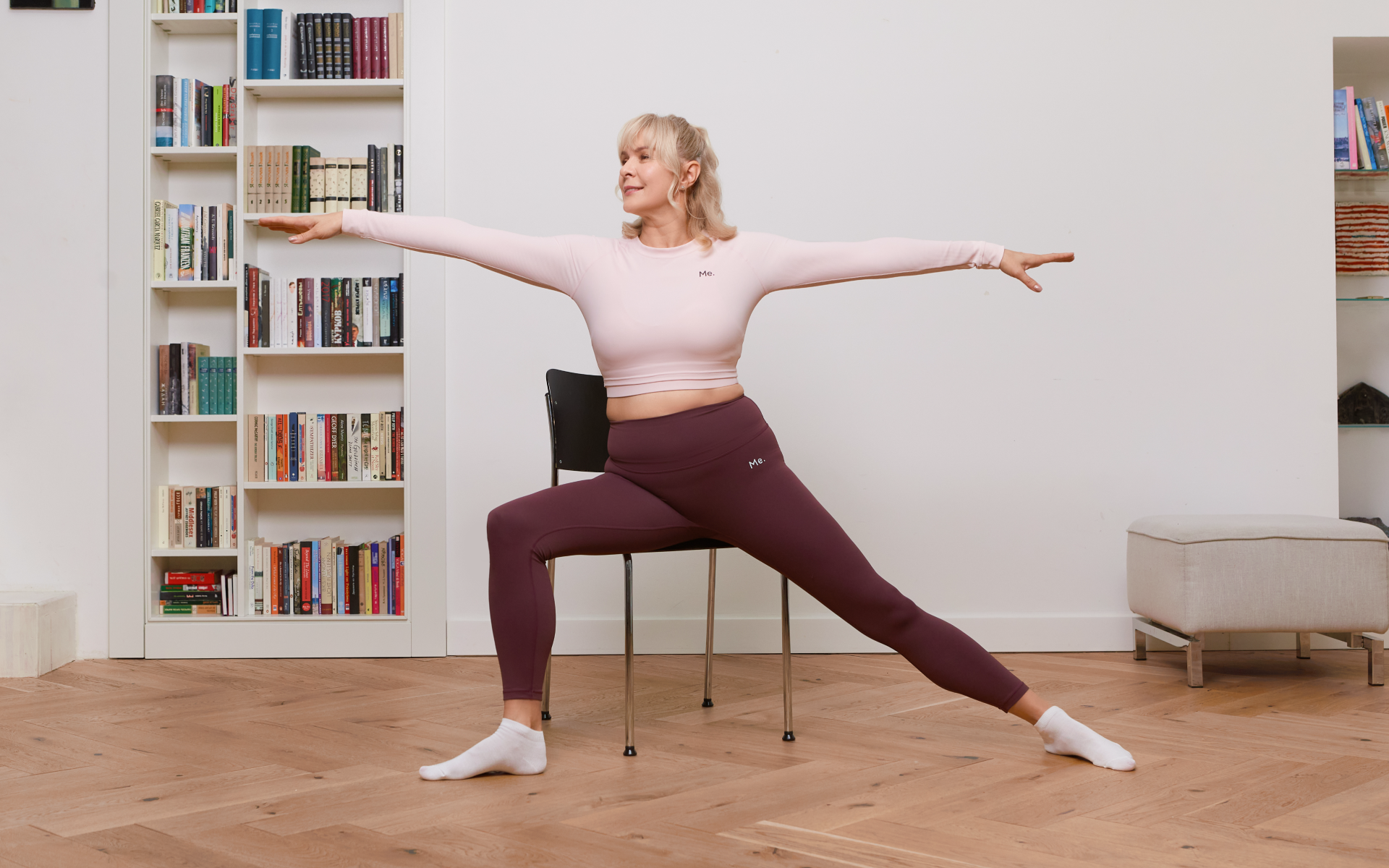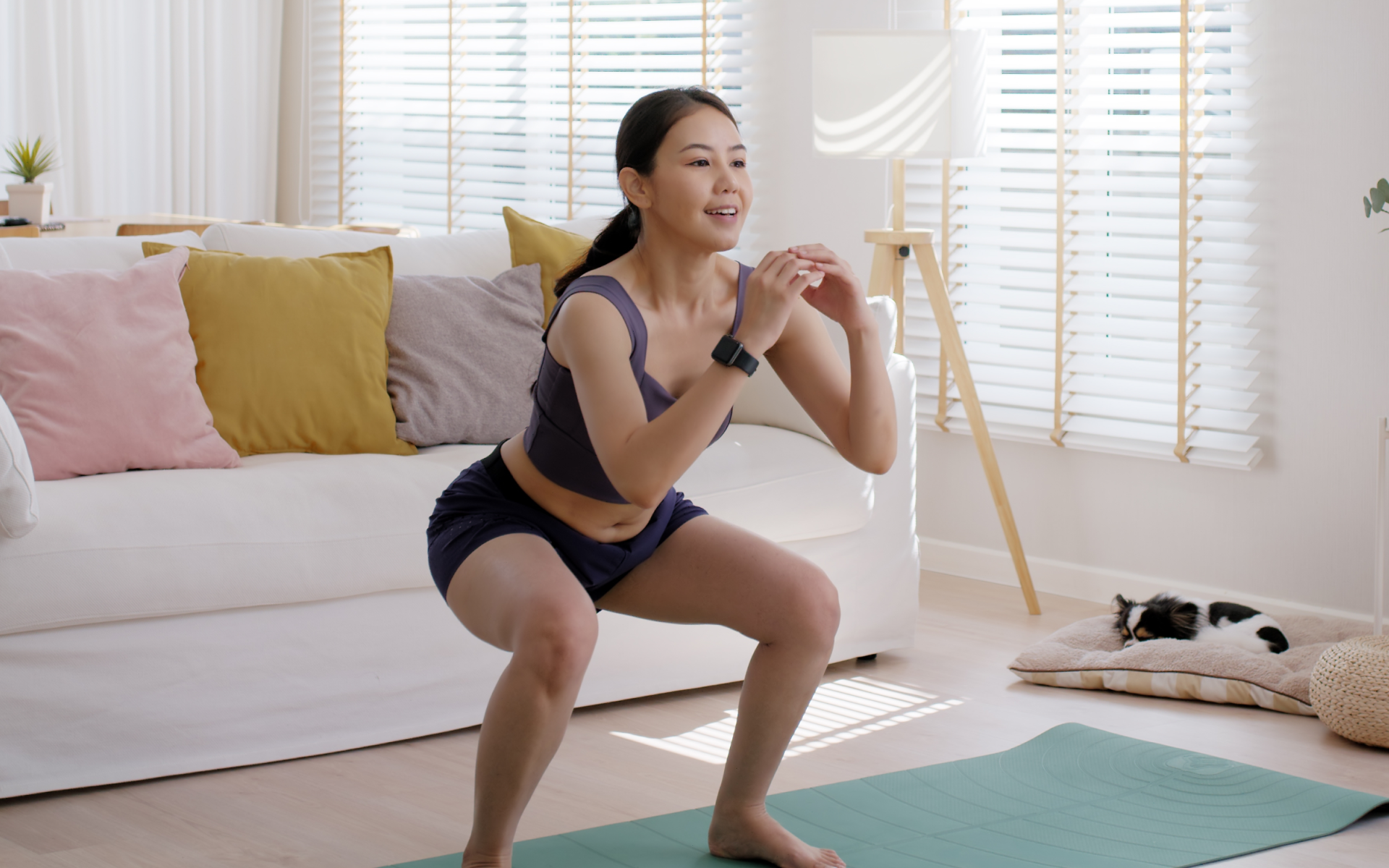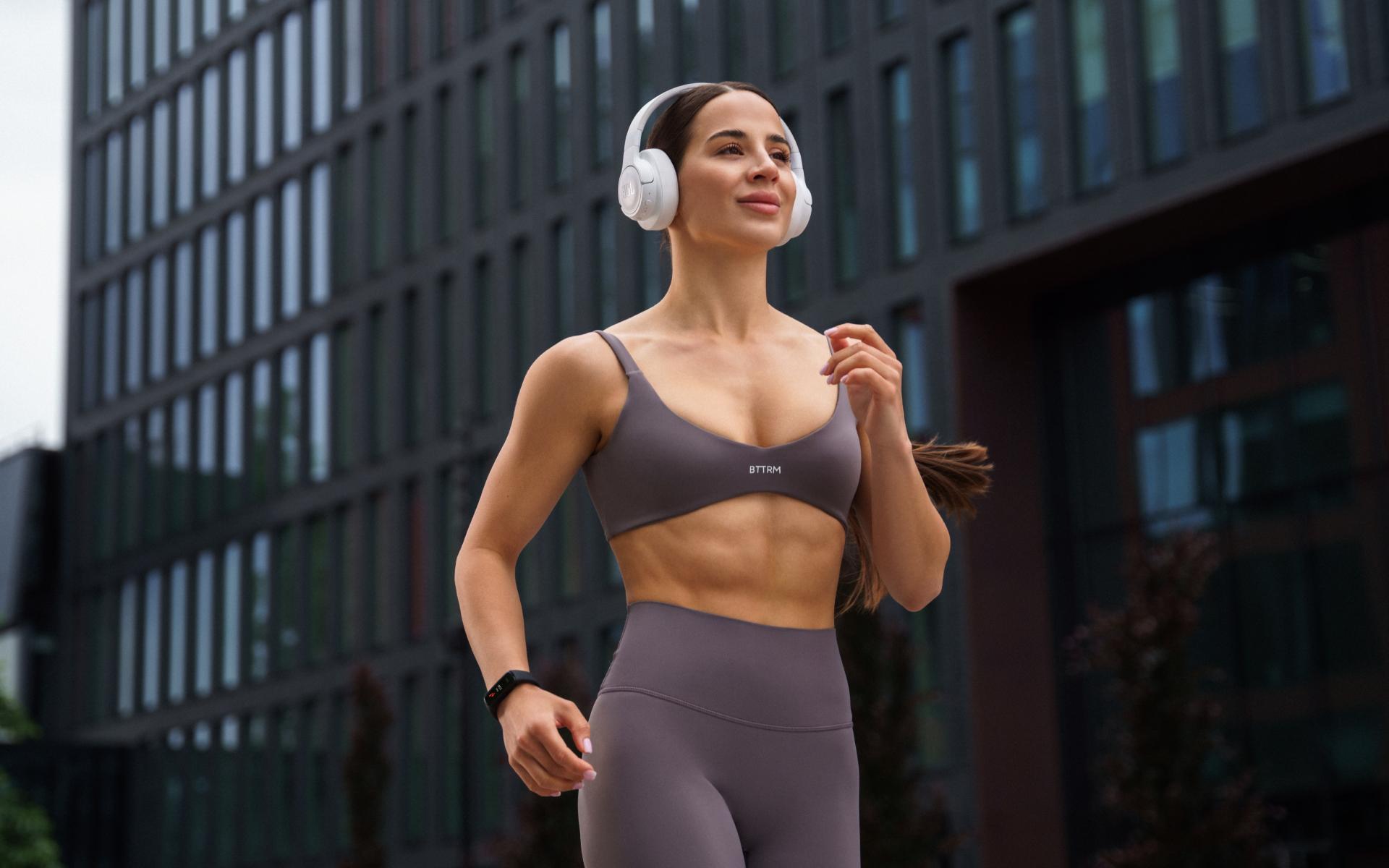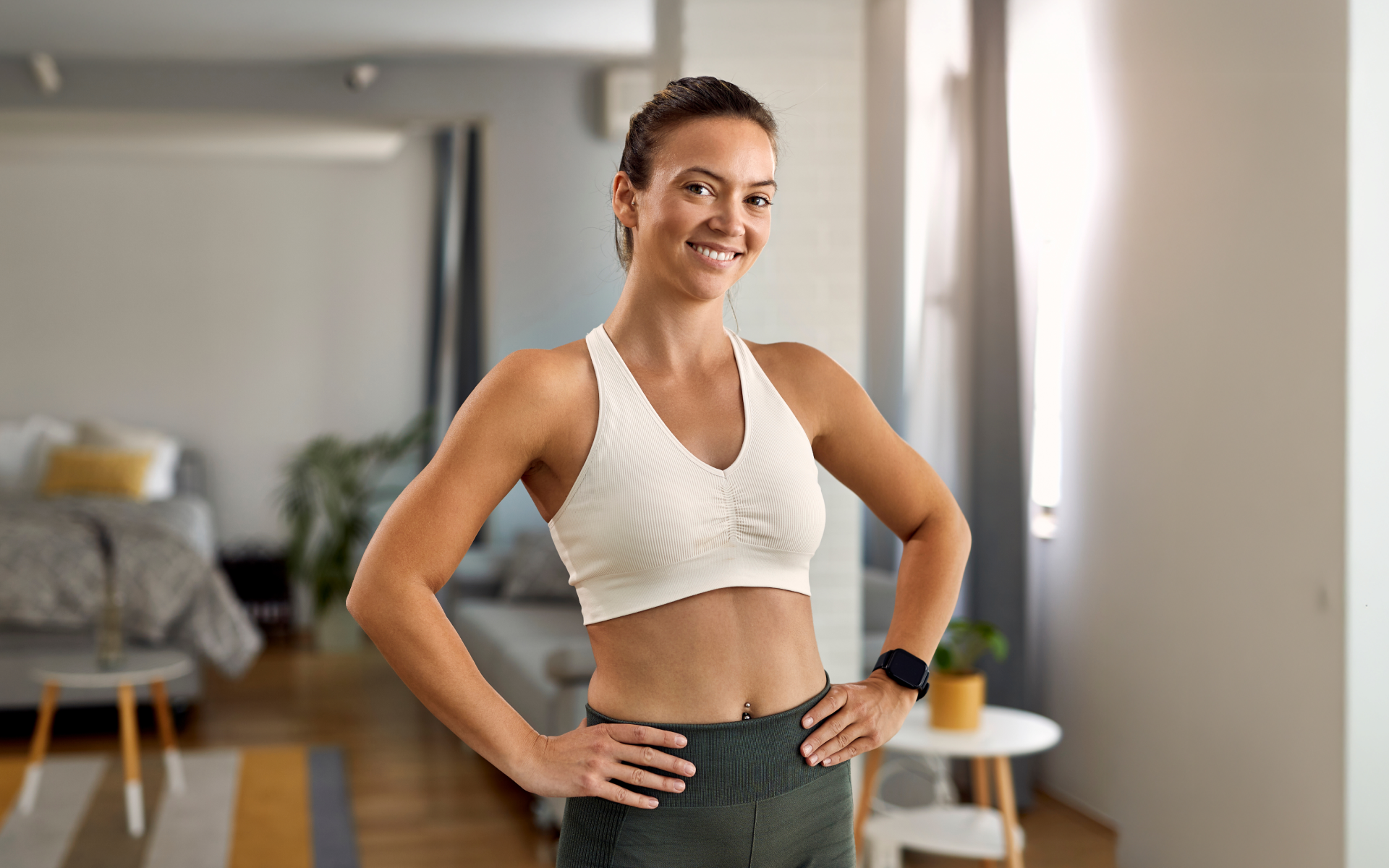Your face makes the first impression. Even before you speak, your face and expressions tell people who you are. Although a fat face isn’t a defect, it’s something people may want to get rid of. Recently, there has been a surge in facial exercises, surgeries, and massage techniques as more people are conscious of fat on their faces.
Running is commonly considered to be one of the activities that can support overall fat loss, which may also reduce fat in the face over time (1). Many people include it in their fitness routines for a slimmer appearance.
If you’ve ever wondered whether running can help with face fat, the short answer is that exercise can’t target one area specifically. However, running is one of the most effective ways to burn calories and promote overall fat loss, which may, over time, reflect in a leaner-looking face.
What Is the Effect of Running on Facial Fat?
Like all forms of exercise, running doesn’t directly target fat in a specific region of the body. In order to lose fat, your body must be in a calorie deficit. This occurs when you burn more calories than you consume. Over time, this can lead to fat loss throughout the entire body, ultimately minimizing facial fat. Running is an enormous calorie burner, so it can be a great exercise option to create a larger calorie deficit, but it won’t directly target fat in your face.
Challenge 1: Loss of Facial Fat
Running helps reduce overall body fat, particularly when combined with a healthy diet in a calorie deficit. With time, this may also reflect in the face. As fat loss happens gradually and can’t be targeted to one specific area, some people may find it takes longer to notice slimming in their cheeks or jawline (2). If you’re curious about exercises to get rid of double chin, check out our earlier article.
- Solution
Staying consistent with running and pairing it with balanced nutrition supports steady fat loss that will eventually include the face. To enhance definition, some people combine exercise with facial toning routines or professional treatments that are designed to sculpt and refine facial contours (3).
Challenge 2: UV Damage
Running outdoors means more sun exposure, even on cloudy days. UV rays break down collagen and elastin, thinning the skin and accelerating signs of aging (4).
- Solution
Always wear a high-factor SPF, hydrate inside and out, and use moisturizers with built-in sun protection. This is the simplest and most effective way to fight premature aging from UV radiation (5).
BetterMe: Health Coaching app helps you achieve your body goals with ease and efficiency by helping to choose proper meal plans and effective workouts. Start using our app and you will see good results in a short time.
Challenge 3: Oxidative and Cellular Stress
Intense running can temporarily reduce oxygen levels in tissues. It can create oxidative stress, contributing to skin damage and fine lines (6).
- Solution
Skin boosters like Profhilo, Redensity 1, or PRP nourish the skin with hyaluronic acid, vitamins, and growth factors (7). These can keep the skin smooth, hydrated, and resilient.
It’s important to note that not all effects of running on the face are negative. Moderate running can help increase your daily caloric burn and can reduce excess facial fat when paired with a diet in a calorie deficit, creating a more sculpted appearance. It can also improve blood circulation to create a natural, healthy glow.
Research has shown that endurance exercise combats premature aging by lowering glycation, which contributes to wrinkles and chronic disease (8). The American Academy of Dermatology further emphasizes that regular, balanced exercise can strengthen the immune system and promote healthier, more youthful-looking skin (9).
To keep the runner’s face at bay, it’s not really about avoiding running. It’s more about dealing with what causes it, mainly sun damage and the loss of natural facial fat.
Read more: Treadmill Everyday Workouts: Is This Recommended?
Why Is It So Hard to Lose Face Fat?
Spot reduction is a myth, and scientific research has shown many times that it’s not possible to pick and choose where you lose fat in your body. When you lose fat, it happens throughout the entire body. The same applies to facial fat. When you try to shed the extra pounds, fat loss will likely happen throughout your body, not just in your face.
Generally, face fat is often harder to lose than fat in other areas as several biological and lifestyle factors influence it. The following are some of the reasons why:
- Poor Diet
A calorie surplus contributes to fat storage in the body and the face, particularly from highly processed foods and sugary drinks. A 2017 study found that a high salt intake can also lead to facial puffiness due to water retention (10).
- Genetics
Your genes influence facial bone structure and where your body stores fat, which makes spot reduction impossible. Therefore, genetics often plays a role when people wonder,“Why am I losing fat in the face?” or why it seems uneven. A 2017 study showed that both hereditary and environmental factors (such as access to healthy food and lifestyle habits) contribute to obesity and, by extension, facial fat (11).
- Aging
Muscle mass may decrease with age and fat distribution shifts. Even otherwise weight-stable individuals experience these changes, which can make facial fat more pronounced.
- Hormonal Changes
Hormonal fluctuations can play a big role in how fat is distributed in the body, which sometimes causes a rounded or “moon face” appearance. Elevated cortisol levels, which are often linked to chronic stress or conditions such as Cushing’s syndrome, are known to increase fat storage in the face, neck, and abdominal area.
Other imbalances, such as low thyroid function or the hormonal changes during menopause, can slow metabolism and promote overall weight gain. These may also become noticeable in the face (12).
- Lack of Exercise
A sedentary lifestyle raises overall body fat percentages, which is reflected in facial fat. Researchers at the university’s Perception Lab modeled how a lack of exercise could alter a person’s appearance using projected average yearly weight gains of 0.55 kg for women and 0.74 kg for men. Their findings suggested that the neck and jowls are most prone to sagging and loose skin, while the forehead and eye area tend to accumulate more fat (13).
Consistent physical activity burns calories and can improve muscle tone. You can even do specific exercises that target the muscles in your face so that when you lose body fat, these muscles become more defined and prominent.
As facial fat is linked to overall body composition, the best strategy combines nutrient-dense eating, regular exercise, and hydration. You can’t spot-reduce fat, but exercising and living a healthy lifestyle can improve facial definition and muscle tone over time.
Why Am I Skinny but My Face Is Chubby?
You may have a skinny body but a chubby face. This could result from genetics, age, or hormones, which influence how your body stores fat. Everyone’s body is different, and there’s nothing wrong with having a naturally rounder face, although it can sometimes be challenging to change.
It’s important to know that buccal fat is the pad of fat that is located between the cheekbones and jawbones and it doesn’t naturally disappear over time (14). This deep fat pocket plays a primary role in defining the overall shape of your face. Although genetics, body weight, and hydration levels can influence how full your face looks, buccal fat itself isn’t significantly reduced through weight loss.
However, external factors, such as dehydration, high sodium intake, lack of sleep, and poor posture, can cause temporary facial puffiness. This can make your face look fuller than it truly is.
Read more: Treadmill Running Workouts to Build Speed, Stamina, and Strength
Which Exercise Burns the Most Face Fat?
When it comes to face fat, there isn’t a single exercise that directly burns fat in the face as fat loss happens throughout the entire body rather than in one specific spot. That being said, certain facial exercises can help strengthen the muscles in your cheeks, jawline, and chin, which can make your face look slimmer and more defined as you lose overall body fat.
A few effective options include:
- Cheek puff exercise: Inflate your cheeks with air and shift them from side to side to work out the cheek muscles.
- Jaw release: Open and close your mouth, exaggeratedly chewing to strengthen the jawline.
- Chin lifts: Tilt your head back, look upward, and stretch your lips as if trying to kiss the ceiling to tighten the area under the chin.
- Fish face exercise: Suck in your cheeks and hold the pose for a few seconds to engage cheek and lip muscles.
- Neck rolls: Slowly roll your head in circular motions to improve neck mobility.
For the best results, combine these moves with cardio and strength training. Exercises such as running actually burn calories, which can lead to weight loss as long as you eat a healthy diet in a caloric deficit.
For more details about why you are losing weight in the face, take a look at our prior publication.
Can You Reduce Face Fat by Running?
As we’ve already explained, running can help you lose body fat by creating a larger calorie deficit, but no form of exercise will directly cause you to lose fat in a specific region of the body. Running is a cardio exercise that burns calories and improves metabolism, and when it’s paired with a healthy diet in a calorie deficit, it can help reduce your body fat percentage. As your body fat decreases, you may notice your face also looking slimmer.
The improved circulation from regular runs can also improve blood flow, giving the skin a healthy glow and helping to reduce facial puffiness. Over time, consistent running, healthy eating, and targeted moves such as exercises that are focused on the facial muscles can also contribute to a more defined jawline and sharper facial contours.
When it comes to weight loss, progress is made by inches, not miles, so it’s much harder to track and a lot easier to give up. The BetterMe: Health Coaching app is your personal trainer, nutritionist, and support system all in one. Start using our app to stay on track and hold yourself accountable!
Does Running Burn Face Fat Fast?
Running won’t magically melt face fat overnight, but when it’s paired with a diet in a calorie deficit, it can help decrease body fat over time. As you can’t pick and choose where to lose fat, it’s important to remember that running is a high-calorie form of exercise, and when you burn more calories than you consume, you can lose body fat. As the rest of your body leans out, your face will likely also naturally look more defined.
The point is that running can be an amazing tool for your weight loss journey. It won’t happen overnight, but with consistent effort in your food intake and exercise habits, you can lose body fat.
Not always. Fat loss varies for every person and depends on genetics, body composition, and lifestyle. Some people notice changes in their face first, while for others, the face slims down later as overall body fat decreases. There’s no set time just for face fat. Plan for at least 150 minutes of moderate exercise or 75 minutes of intense exercise per week, which is recommended for general fat loss (15). As your body fat drops, your face will naturally look leaner. A “runner’s body” is a lean, toned physique with lower body fat and well-defined leg muscles. Long-distance runners often have slimmer builds, while sprinters tend to have more muscular frames (16). Over time, exercise and healthy eating habits can cause you to lose fat throughout your body. Running can help you create a larger calorie deficit and strengthen the lower body. When you lose fat, your muscles become more visible, so running could help you lose fat and show off more leg definition, which could make your thighs appear slimmer. Frequently Asked Questions
Is face fat the last to go?
How long should I run to lose face fat?
What is a runner’s body?
Does running slim your thighs?
The Bottom Line
Running is a high-calorie-burning form of exercise. When your body burns more calories than it consumes, it will burn body fat. It’s important to remember that no exercise can target fat in a specific body region – running is just one of the many tools you use during your fat loss journey.
DISCLAIMER:
This article is intended for general informational purposes only and does not serve to address individual circumstances. It is not a substitute for professional advice or help and should not be relied on for making any kind of decision-making. Any action taken as a direct or indirect result of the information in this article is entirely at your own risk and is your sole responsibility.
BetterMe, its content staff, and its medical advisors accept no responsibility for inaccuracies, errors, misstatements, inconsistencies, or omissions and specifically disclaim any liability, loss or risk, personal, professional or otherwise, which may be incurred as a consequence, directly or indirectly, of the use and/or application of any content.
You should always seek the advice of your physician or other qualified health provider with any questions you may have regarding a medical condition or your specific situation. Never disregard professional medical advice or delay seeking it because of BetterMe content. If you suspect or think you may have a medical emergency, call your doctor.
SOURCES:
- The effect of regular running on body weight and fat tissue of individuals aged 18 to 65 (2023, pmc.ncbi.nlm.nih.gov)
- Spot reduction: why targeting weight loss to a specific area is a myth (2023, sydney.edu.au)
- The evolving role of hyaluronic acid fillers for facial volume restoration and contouring: a Canadian overview (2012, pmc.ncbi.nlm.nih.gov)
- Ultraviolet Radiation, Aging and the Skin: Prevention of Damage by Topical cAMP Manipulation (2014, mdpi.com)
- Sunscreens and Photoaging: A Review of Current Literature (2021, link.springer.com)
- Endurance Athletes and Skin Aging: Mechanisms, Risks, and Protective Strategies (2025, jdermis.com)
- Skin Boosters vs Profhilo: Which Treatment Is Best? (n.d., theaestheticsdoctor.com)
- The role of glycation in the pathogenesis of aging and its prevention through herbal products and physical exercise (2017, e-pan.org)
- 11 ways to reduce premature skin aging (2021, aad.org)
- Salt and water: not so simple (2017, pubmed.ncbi.nlm.nih.gov)
- GENETIC AND EPIGENETIC CAUSES OF OBESITY (2017, pmc.ncbi.nlm.nih.gov)
- Hormonal Imbalance (2022, my.clevelandclinic.org)
- Study faces up to lack of exercise (2010, timesofmalta.com)
- Effect of Abdominal Resistance Exercise on Abdominal Subcutaneous Fat of Obese Women: A Randomized Controlled Trial Using Ultrasound Imaging Assessments (2015, jmptonline.org)
- The Calorie Burning Calculation System in Jogging Using a Thresholding-Based Accelerometer Sensor (2020, kinetik.umm.ac.id)
- American Heart Association Recommendations for Physical Activity in Adults and Kids (n.d., heart.org)
- Long-Distance Runners and Sprinters Show Different Performance Monitoring – An Event-Related Potential Study (2018, pmc.ncbi.nlm.nih.gov)
